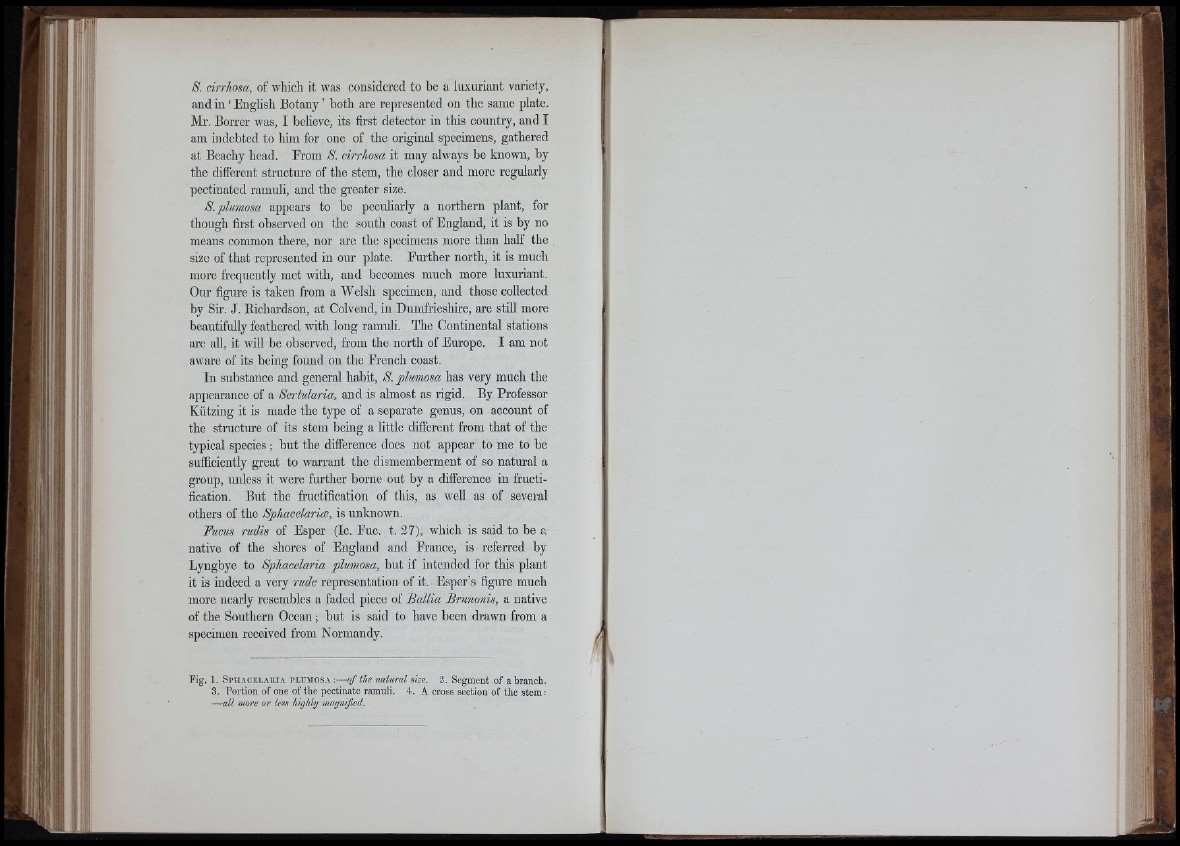
s. cirrJma, of which it was considered to be a luxuriant variety,
and in ‘ English Botany ’ both are represented on the same plate.
Mr. Borrer was, I believe, its first detector in this country, and I
am indebted to him for one of the original specimens, gathered
at Beachy head. Erom S. cirrhosa it may always be known, by
the different structure of the stem, the closer and more regularly
pectinated ramuli, and the greater size.
S. plumosa appears to be peculiarly a northern plant, for
though first observed on the south coast of England, it is by no
means common there, nor are the specimens more than half the
size of that represented in our plate. Eurther north, it is much
more frequently met with, and becomes much more luxuriant.
Our figure is taken from a Welsh specimen, and those collected
by Sir. J. Richardson, at Colvend, in Dumfrie.shire, are still more
beautifully feathered with long ramuli. The Continental stations
are all, it will be observed, from the north of Europe. I am not
aware of its being found on the Erench coast.
In suhstance and general habit, S. plumosa has very much the
appearance of a Sertularia, and is almost as rigid. By Professor
Kiitzing it is made the type of a separate genus, on account of
the structure of its stem being a little different from that of the
typical species ; but the difference does not appear to me to be
sufficiently great to warrant the dismemberment of so natural a
group, unless it were further borne out by a difference in fructification.
But the fructification of this, as well as of several
others of the Sphacelarioe, is unknown.
Fucus rudis of Esper (Ic. Fuc. t. 27), which is said to be a
native of the shores of England and France, is referred by
Lyngbye to Sphacelaria plumosa, but if intended for this plant
it is indeed a very rude representation of it. Esper’s figure much
more nearly resembles a faded piece of JBallia Brunonis, a native
of the Southern Ocean ; but is said to have been drawn from a
specimen received from Normandy.
Fig, 1. Sp h a c e l a e ia p lum o sa :— of the natural size. 2. Segment of a branch.
3. Fortion of one of tbe pectinate ramuli. 4. A cross section of the stem:
— all ware or less highly magnified.